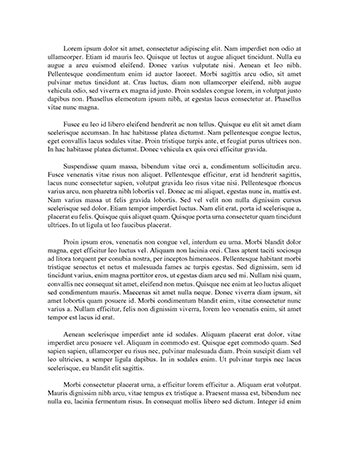mla
ReferencesBrown, N. (2019) Nearly Four of Every Five U.S. Coffee Shops are Now Starbucks, Dunkin\\\\\\\\\\\\\\\' or JAB Brands, Retrieved November 19, 2020 S. (2020) The economic impact of the coffee industry, Retrieved November 19, 2020 from https://www.market-inspector.co.uk/blog/2019/09/uk-coffee-market David, J. (2020, August 11). Competitors of Starbucks (Competitor analysis of Starbucks). Retrieved November 19, 2020, from https://howandwhat.net/competitors-starbucks-competitor-analysis-starbucks/ Dudovskiy, J. (2017, April 1). Starbucks Business Strategy and Competitive Advantage - Research-Methodology. Retrieved November 18, 2020, from https://research-methodology.net/starbucks-coffee-business-strategy-2/ Farley, A. (2020, November 16). How Starbucks Makes Money: Most Revenue Comes From Americas, Beverages. Retrieved November 18, 2020, from https://www.investopedia.com/articles/markets/021316/how-starbucks-makes-money-sbux.asp Frost, B. (2007). Measuring performance: seven good reasons to use a scorecard. Performance Perspectives Series, Measurement International, Texas, USA.Geereddy, N. (2013). Strategic analysis of Starbucks Corporation. Harward [??????????? ??????].–????? ???????: http://scholar. Harvard. edu/files/nithingeereddy/files/starbucks_ case_analysis. pdf.Haskova, K. (2015). Starbucks marketing analysis. CRIS-Bulletin of the Centre for Research and Interdisciplinary Study, 2015(1), 11-29.Hawley, J. (2019). Who Are Starbucks\\\\\\\\\\\\\\\' Main Competitors? Retrieved November 19, 2020, from https://www.investopedia.com/articles/markets/101315/who-are-starbucks-main-competitors.asp Hefner, L. (2011). Network Balanced Scorecard. White Plains, NY: New YorkJigba K. E. (2013). STARBUCKS SWOT ANALYSIS AND STRATEGIC SCORECARD. Retrieved November 19, 2020, from https://nanopdf.com/download/jigbakm6a2-final_pdf Kurtz, S. (2009). Balanced Scorecard Basics. New York: Cambridge University Press, New YorkLock, S. (2020) Coffee chain market share in the U.S. as of October 2019, by number of stores, Retrieved November 19, 2020 from https://www.statista.com/statistics/250166/market-share-of-major-us-coffee-shops/ MartinRoll. (2020, October 05). The Secret to Starbucks\\\\\\\\\\\\\\\' Brand Success. Retrieved November 19, 2020, from https://martinroll.com/resources/articles/strategy/secret-starbucks-brand-success/ McNamara, T., & Moore-Mangin, A. (2015, August 03). Starbucks and Social Media: It\\\\\\\\\\\\\\\'s About More than Just Coffee. Retrieved November 18, 2020, from http://www.econtentmag.com/Articles/Editorial/Commentary/Starbucks-and-Social-Media-Its-About-More-than-Just-Coffee-103823.htm Pafitis, E. (2020, February 17). Starbucks\\\\\\\\\\\\\\\' Marketing Strategy: What Your Company Can Learn. Retrieved November 18, 2020, from https://www.startingbusiness.com/blog/marketing-strategy-starbucks Panagiotaropoulou, S. (2015). Starbucks Case Study: Innovation in CRM strategies, means of enabling E-Commerce. LinkedIn Pulse.Peterson, H. (2015) \\\\\\\\\\\\\\\"5 ways Starbucks entices you to spend more money\\\\\\\\\\\\\\\" Business Insider, Available at http://www.businessinsider.com/how-starbucks-entices-you-to-spend-more-2015-2 Peterson, H. (2015, February 13). 5 ways Starbucks entices you to spend more money. Retrieved November 18, 2020, from https://www.businessinsider.com/how-starbucks-entices-you-to-spend-more-2015-2?IR=T Peterson, H. (2017, March 20). Starbucks is testing a new technology to solve its crisis of long lines and delays. Retrieved November 18, 2020, from https://www.businessinsider.com/starbucks-sends-text-messages-to-fix-long-lines-in-stores-2017-3?IR=T Pulakos, E. D. (2004). Performance Management: A roadmap for developing, implementing, and evaluating performance management systems (pp. 1-42). Alexandria, VA: SHRM Foundation.Research and Markets. (2020, July 24). Global Coffee Shops Market to be Worth $237.6 Billion by 2025. Retrieved November 19, 2020, from https://www.globenewswire.com/news-release/2020/07/24/2067143/0/en/Global-Coffee-Shops-Market-to-be-Worth-237-6-Billion-by-2025.html Reuters. (n.d.). Starbucks Corporation Profile. Retrieved November 18, 2020, from https://www.reuters.com/companies/SBUX.ORobinson, B. (2019) Starbucks-Luckin competition heats up, Retrieved November 19, 2020 http://www.chinadaily.com.cn/a/201905/01/WS5cc9b0c8a3104842260b97b4.html Rogers, K. (2018, September 13). Starbucks to build 10,000 \\\\\\\\\\\\\\\'GREENER\\\\\\\\\\\\\\\' stores by 2025. Retrieved March 22, 2020, from https://www.cnbc.com/2018/09/13/starbucks-to-build-10000-greener-stores-by-2025.html Taylor, A. (2020, June 20). 10 Performance Management Tools Every HR Pro Should Know. Retrieved November 19, 2020, from https://peoplemanagingpeople.com/tools/performance-management-tools/ Tudorache, A. (2017, April 17). Achieving and managing performance in coffee shops: The Starbucks experience. Retrieved November 19, 2020, from https://www.performancemagazine.org/managing-performance-starbucks-experience/ Voora, V., Bermúdez, S., & Larrea, C. (2019). Global Market Report: Coffee. International Institute for Sustainable Development.https://dailycoffeenews.com/2019/10/25/nearly-four-of-every-five-us-coffee-shops-are-now-starbucks-dunkin-or-jab-brands/ Caki,


